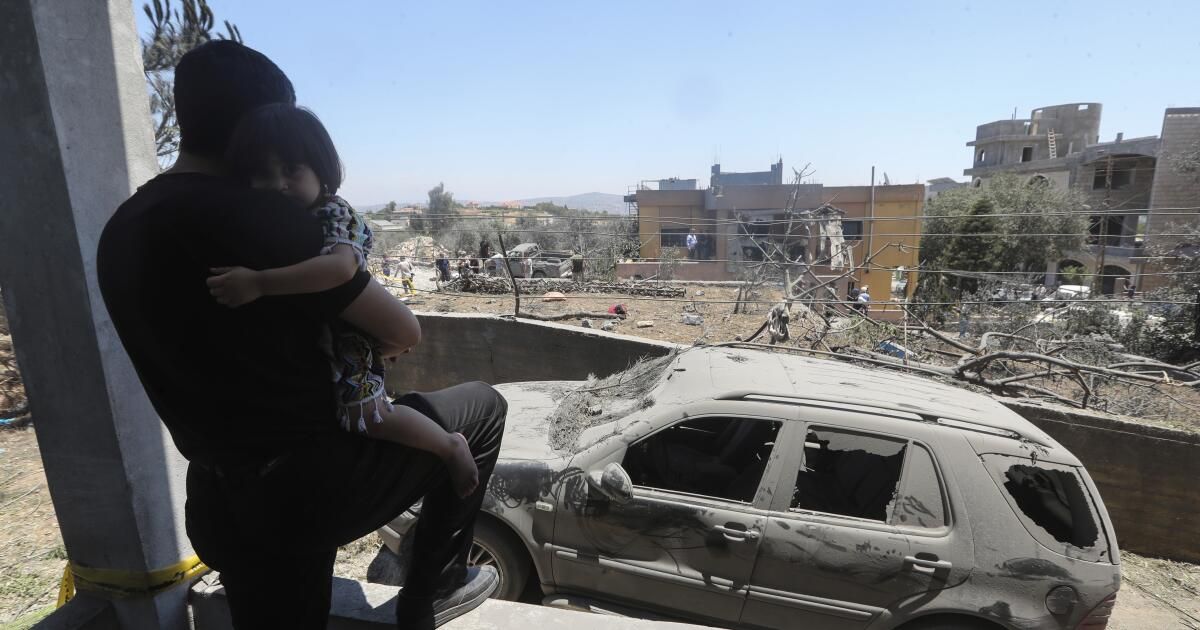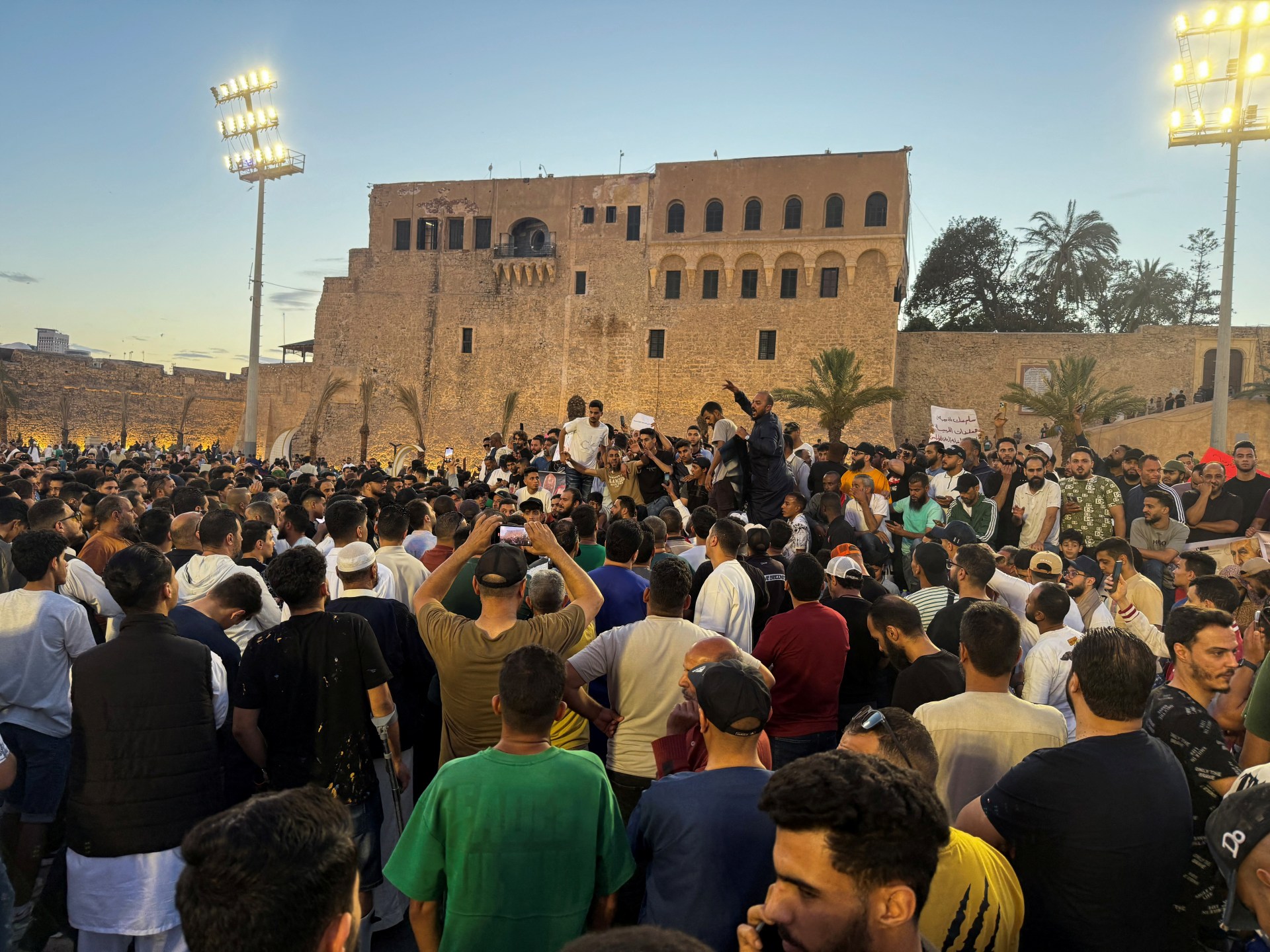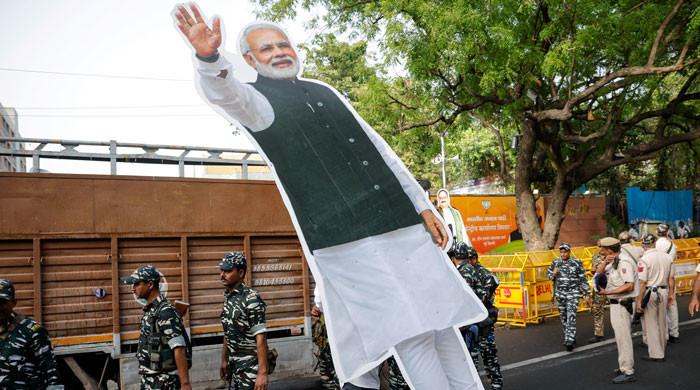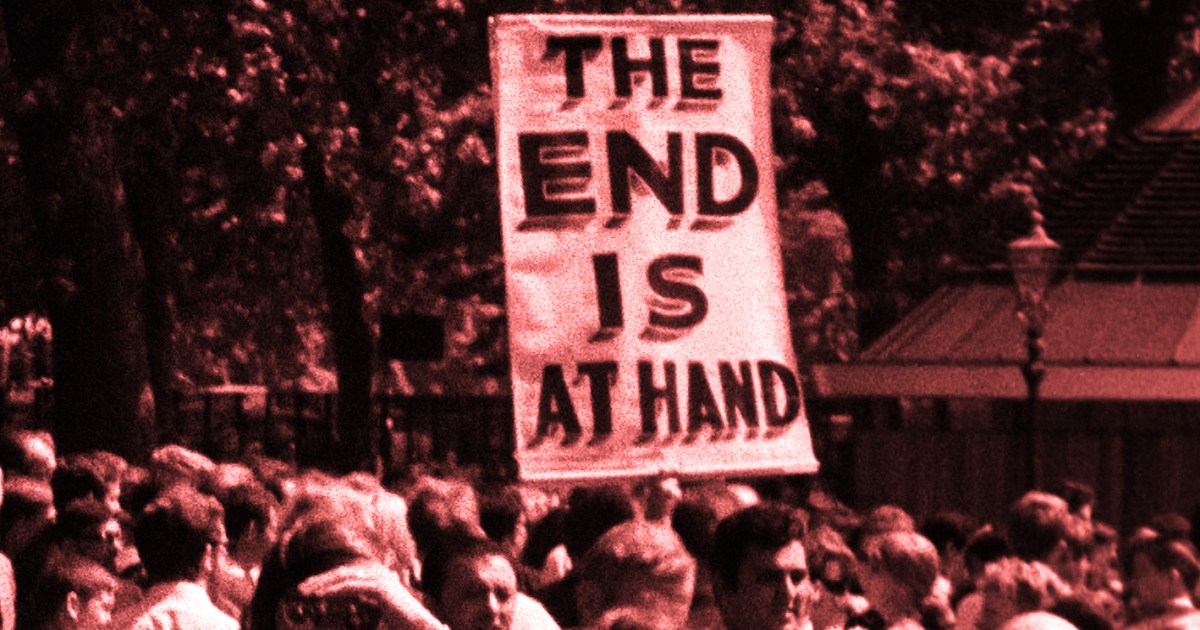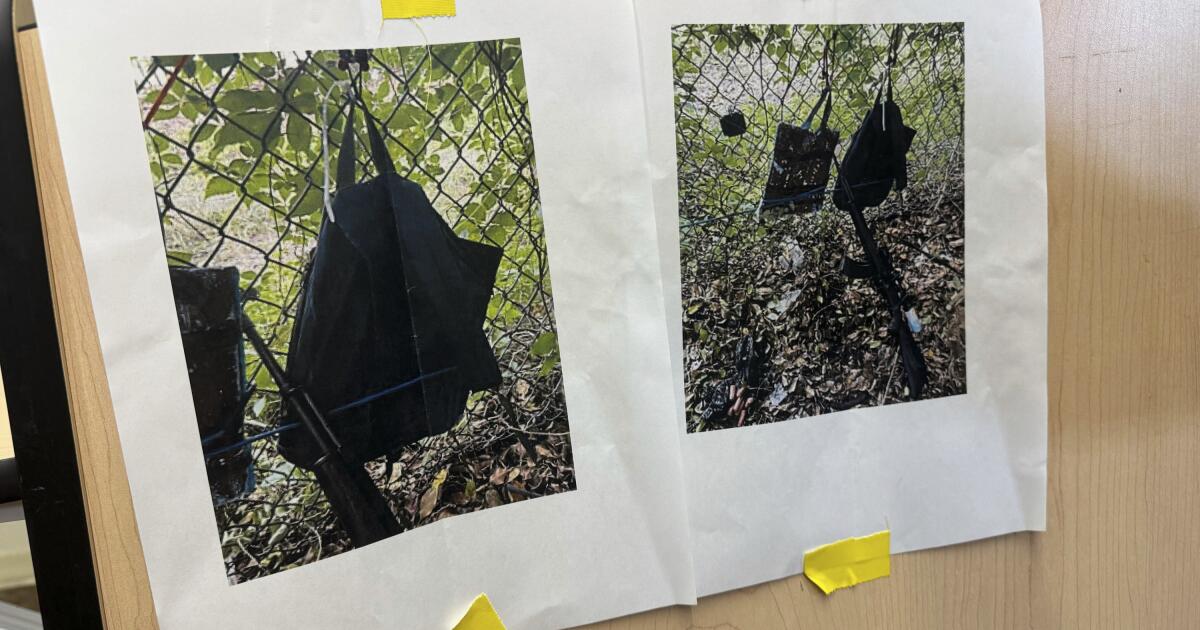The first assassination came in two attempts. An Israeli drone fired a missile that hit a Renault van in southern Lebanon. When the target, a Hezbollah operative, got out of the vehicle and fled into a thicket by the road, a second missile finished the job.
That same morning, 60 miles to the northeast, another drone struck a Dodge pickup truck carrying a commander of Jamaah Al-Islamiyah, a Lebanese Sunni Islamist faction allied with Hamas and Hezbollah.
The third assassination took place that night, when a missile struck a three-story building in the town of Jmaijmeh, killing Ali Maatouq, a senior commander in Hezbollah's elite Radwan force.
Last week's three attacks were part of a particularly violent day in southern Lebanon, where Hezbollah, the Shiite paramilitary faction and political party, has been in conflict with Israel for more than nine months. But they were also another salvo in an intelligence war that has been going on for longer.
Since Oct. 7, when Hamas carried out its brutal attack on southern Israel and Hezbollah launched what it calls a “solidarity campaign,” Israel has eliminated some two dozen Hezbollah commanders.
The circumstances surrounding some of the killings point to a major security breach.
In June, Israel killed Sami Taleb Abdullah, 55, head of Hezbollah’s southeastern district, by bombing a building where he and three other operatives were holding a secret meeting. Three weeks later, it killed Mohammad Nimeh Nasser, who commanded the southwestern division, as he was driving in the southern city of Tyre.
Relatives of top Hezbollah commander Sami Taleb Abdullah, who was killed in an Israeli strike in southern Lebanon, mourn during his funeral procession in Beirut in June.
(Bilal Hussein / Associated Press)
One of the biggest questions facing Hezbollah is how Israel managed to identify, track and kill top officers of the group, which has a reputation for high levels of discipline and operational security.
Israel, using its technological advantage in intelligence gathering, has long maintained surveillance over Hezbollah-dominated parts of the country, flying drones, intercepting phone calls and gathering information on social media.
In past years, it has planted spy devices camouflaged in rocks or pieces of trash and jammed the secure fiber-optic network that Hezbollah built across vast swaths of the country after the 2006 war with Israel.
“It is logical that the Resistance suffers losses because Israel has satellites, spy technology and the cooperation of intelligence services from other countries,” said Gen. Mounir Shehadeh, who has served as the Lebanese government’s coordinator in the United Nations peacekeeping mission in Lebanon. The term “Resistance” refers to a pro-Iranian network of governments and various factions — including Hezbollah — that have aligned themselves against Israel and the United States.
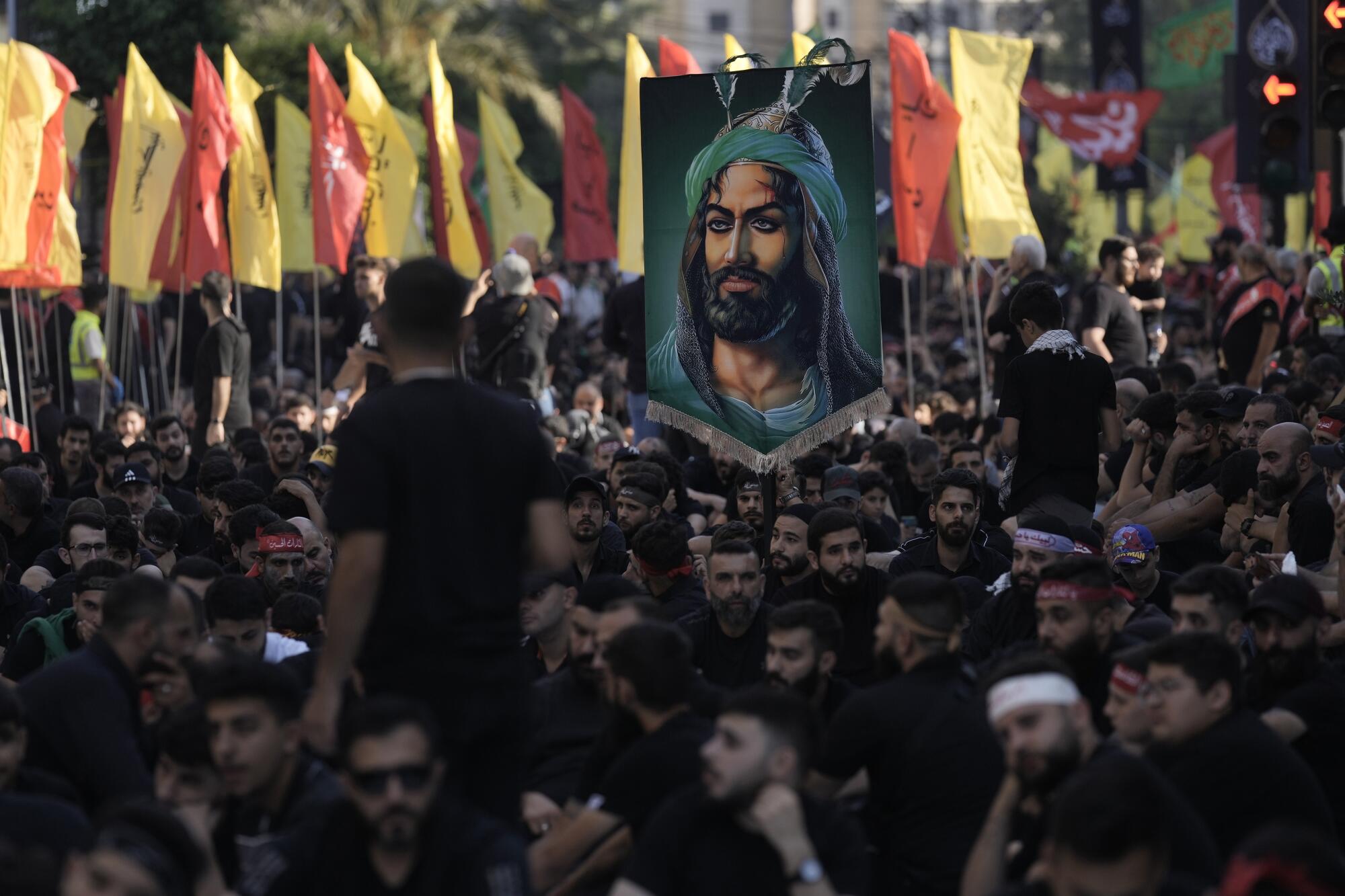
Hezbollah supporters hold a picture depicting Prophet Muhammad's grandson Imam Hussein in a sermon as they listen to the story of Ashura on July 17 in Beirut.
(Bilal Hussein / Associated Press)
Shehadeh said Israel has obtained non-public landline and cellphone numbers and has been using facial recognition and voiceprint technologies to track targets.
Still, Hezbollah has managed to reduce Israel's success rate to what he described as “an acceptable level of losses,” he said.
In Hezbollah-dominated areas of the capital, the eastern Bekaa Valley and the south of the country, the group has called on residents to turn off internet connections with security cameras in front of their homes for fear they could be targeted by hackers. It has issued instructions for people to refrain from taking and posting photos with their smartphones. And for its own cadres and their families, it has banned the use of smartphones altogether, ordering them to rely instead on pagers, messengers and coded messages over its landline network.
“Turn off the device… put it in a steel box and lock it there for a week, two weeks, a month,” Hezbollah Secretary-General Sheikh Hassan Nasrallah said in a speech in February. “God knows how long this situation will last.”
Hezbollah has also improved the security of its landline network since a recent cyber attack was blamed for causing at least two murders, according to a Lebanese security source who spoke on condition of anonymity.
The fact that Israel managed to detect and kill cadres despite these countermeasures has raised suspicions that there are spies within Hezbollah.
With Lebanon's economy virtually paralyzed since 2019 by a years-long inflationary crisis that wiped out much of people's savings, it would not be difficult to recruit agents with financial incentives.

Hezbollah fighters stand guard as Hezbollah leader Sheikh Hassan Nasrallah speaks on a screen during activities marking the Shi'ite Muslim holy day of Ashura on July 17 in the southern suburbs of Beirut.
(Bilal Hussein / Associated Press)
Lebanese authorities say they have made several arrests amid a surge in intelligence-gathering efforts.
Many of those arrested were tricked into responding to job advertisements on social media at a purported real estate company and then agreeing to photograph certain locations, which were initially non-sensitive but eventually became more restricted areas, such as Dahieh, the Beirut suburb where Hezbollah is based. Late last year, one suspect was caught carrying out three-dimensional mapping of the area’s streets and monitoring the radio spectrum on behalf of a foreign company believed to be an intelligence front.
Foreigners have also been involved. Last year, a Russian citizen was caught trying to escape the country after he was caught on camera trying to enter a Hezbollah-owned building in Dahieh.
But experts say Israel relies less on human intelligence than on electronic eavesdropping.
“The nature of the ongoing war is based on a huge database of information that Israel is exploiting in its operations,” said Ali Al-Amin, a critical Hezbollah analyst.
He added that Hezbollah's security is so tight that Israel would practically have to get its information from insiders.
At the same time, Hezbollah has scored its own intelligence victories. Over the past nine months, it has methodically attacked Israeli intelligence infrastructure along the border between the two countries, undermining Israel’s network of surveillance towers, listening devices and surveillance balloons with countless smaller attacks that have, in turn, degraded the defensive capabilities of Iron Dome and other systems.
On Wednesday, Hezbollah released a nine-minute video that it says was recorded this month from an Iranian-made drone that flew over Israel’s Ramat David airbase, about 50 kilometers from the border. The video highlights a number of potential military targets — including rows of Apache and Panther helicopters, C-130 transport planes, repair depots and other logistical areas — and provides the name and a photograph of the base commander.
Israeli authorities downplayed the video, with an army spokesman writing on X that “the images published by Hezbollah were captured by a drone exclusively for photography. The activity of the air base was not affected.”
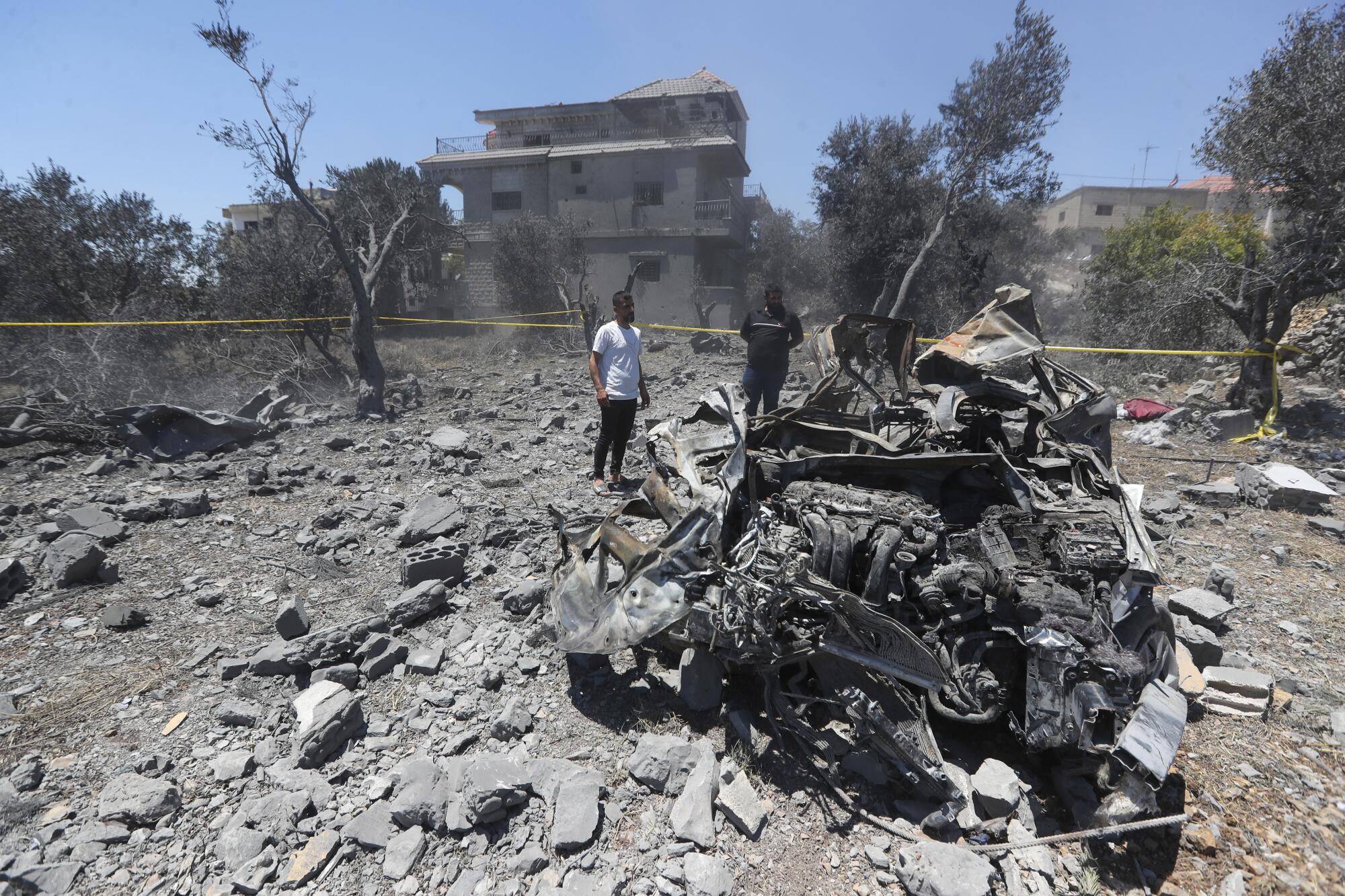
People stand next to a destroyed car that was hit by an Israeli airstrike in the village of Jmaijmeh, southern Lebanon, on July 19.
(Mohammed Zaatari / Associated Press)
“The Air Force is working by all means to protect the skies of the State of Israel,” he wrote.
Since early October, when Hezbollah began launching attacks on northern Israel and Israel retaliated, nearly 400 Hezbollah members and more than 100 Lebanese civilians have been killed in the fighting. Some 90,000 people in Lebanon have been forced to flee their homes. On the Israeli side, 21 soldiers and 13 civilians have been killed and around 60,000 people have been displaced.

